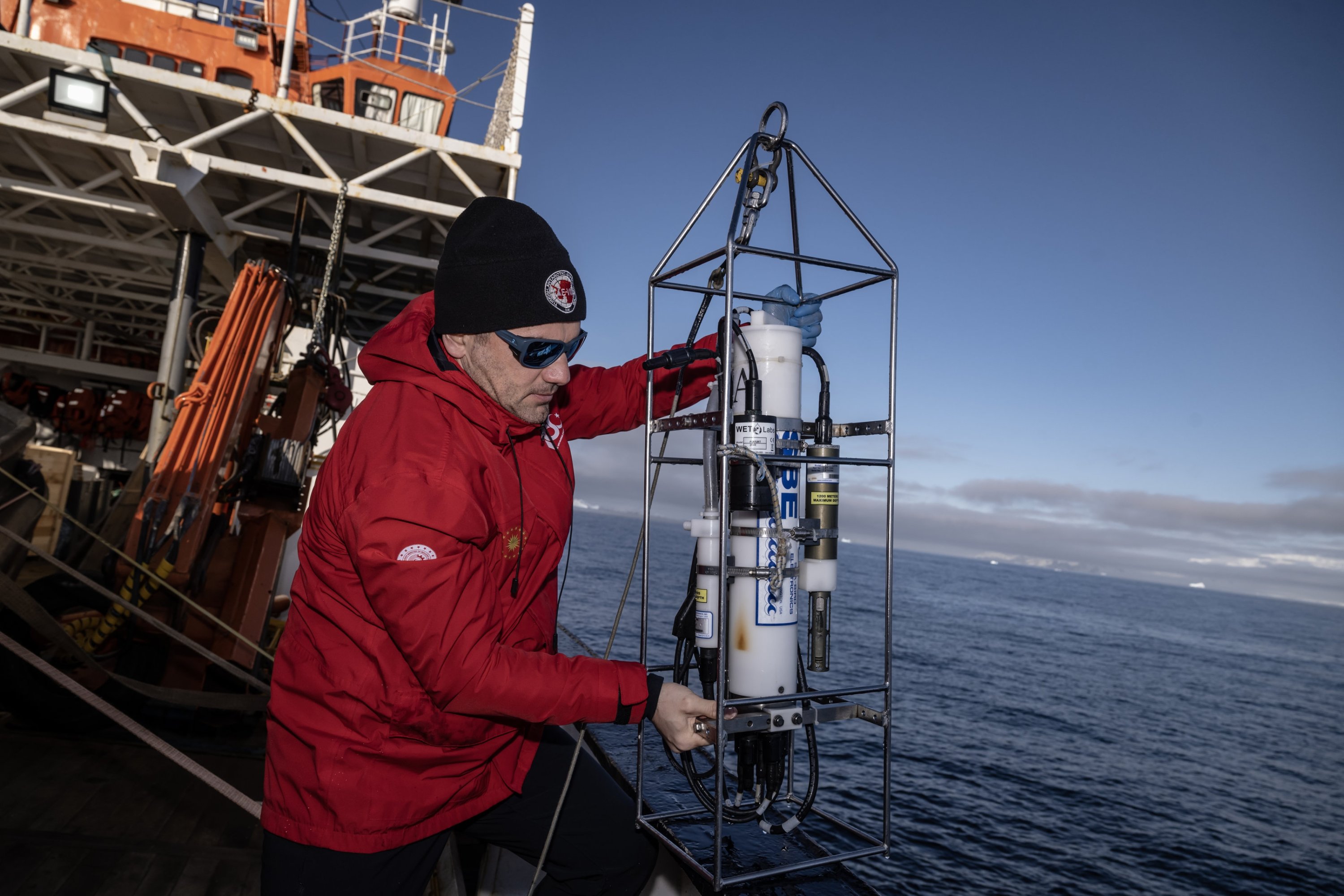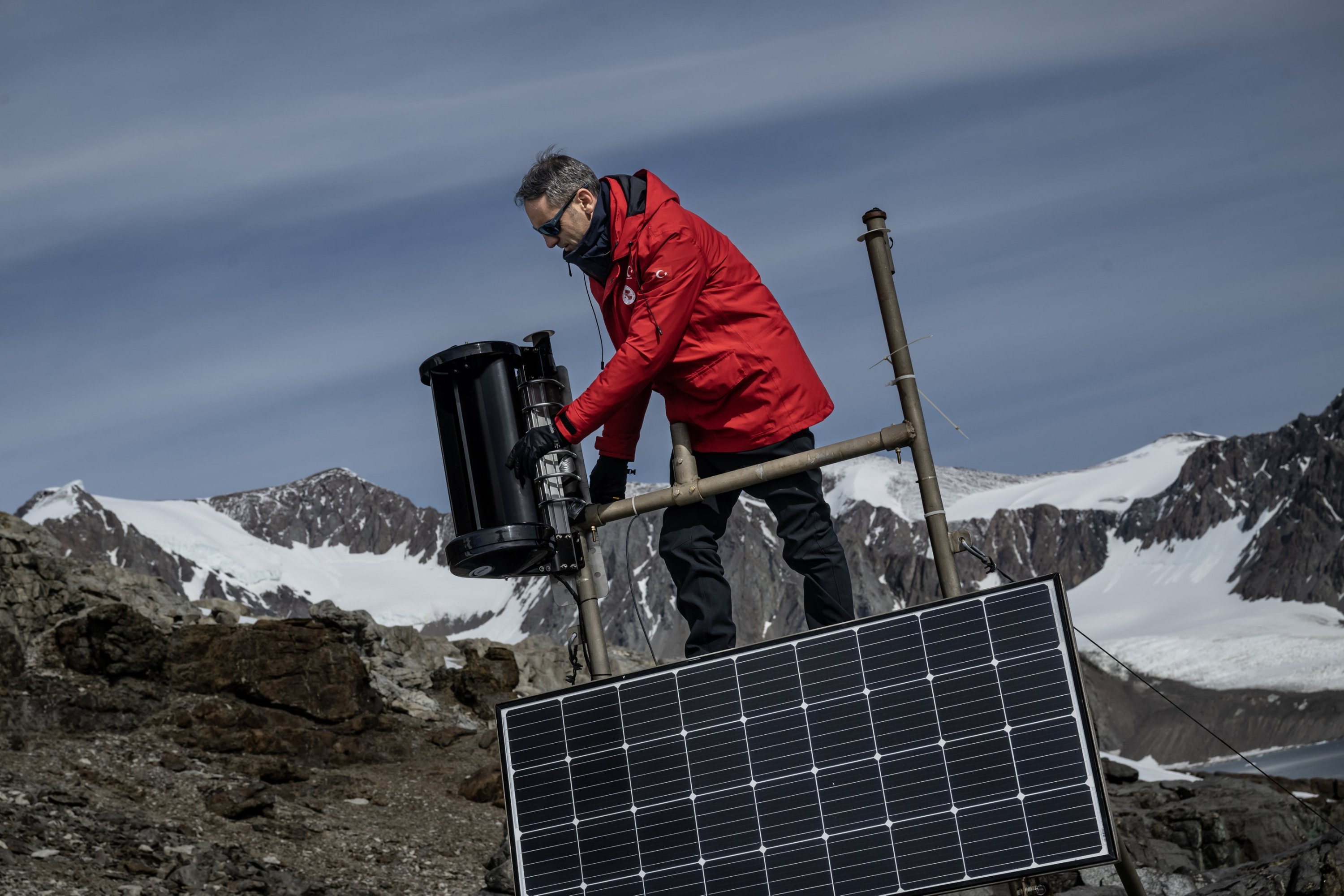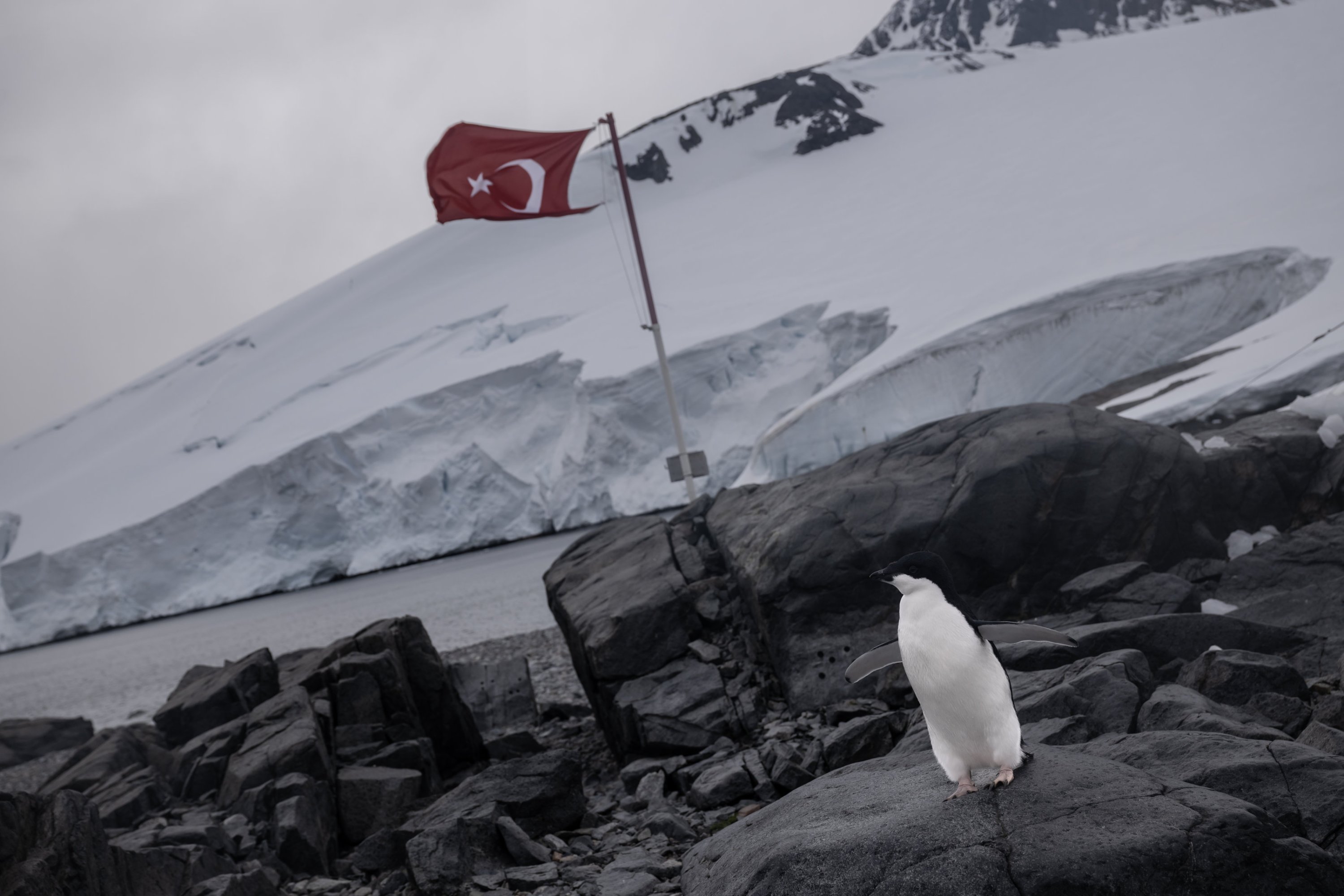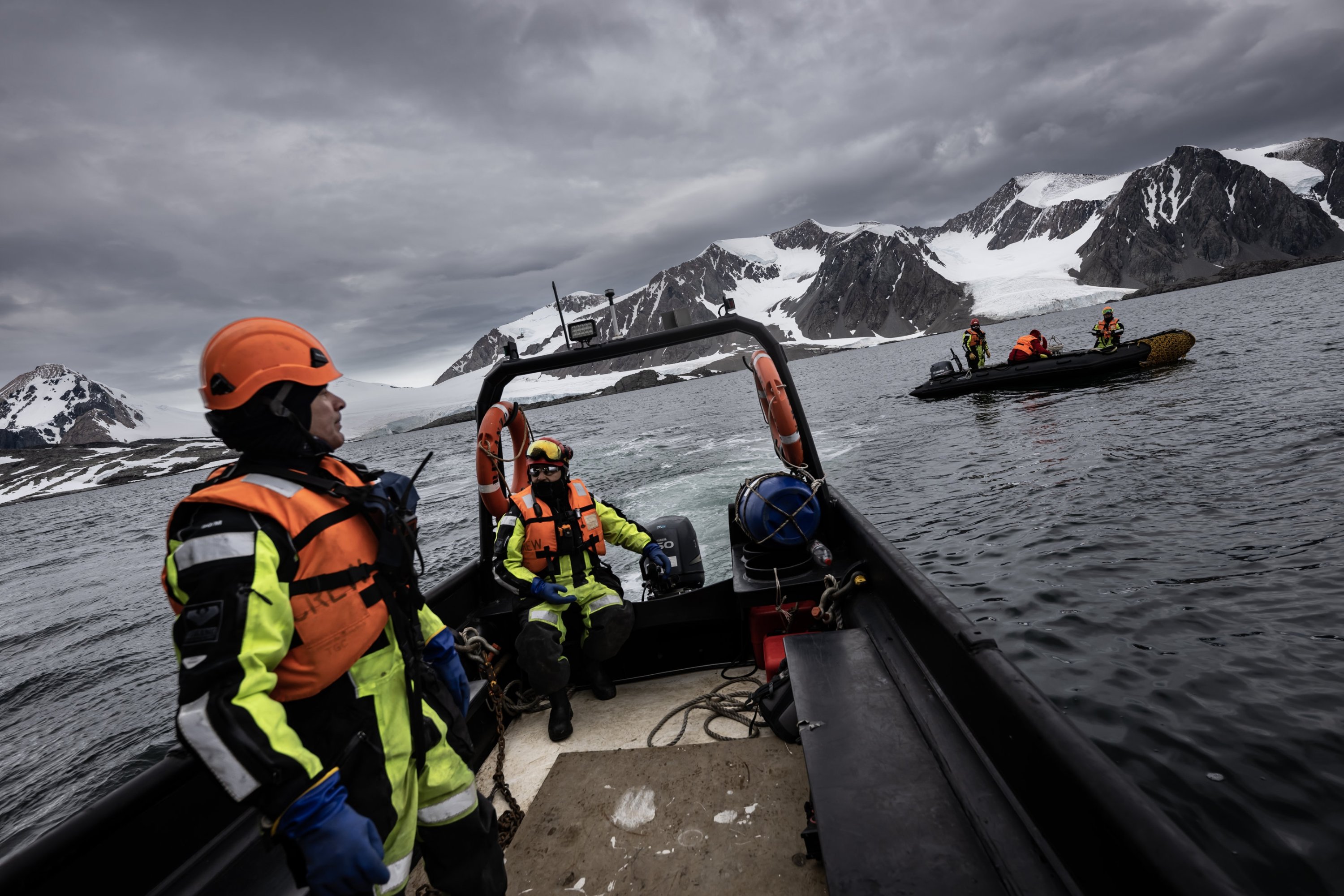© Turkuvaz Haberleşme ve Yayıncılık 2024
As the 8th National Antarctic Scientific Expedition, consisting of a team of 24 distinguished Turkish researchers, is completed, scientists shed light on the unknowns of the planet with their studies on the continent.
Under the auspices of the Turkish Presidency, the Ministry of Industry and Technology and coordinated by the Scientific and Technological Research Council of Türkiye (TÜBITAK), the 24-member team that conducted the expedition returned on Tuesday to the country after the 36-day expedition.
Returning to Türkiye with their studies in various fields such as environmental and pollution research, oceanography and hydrography studies, atmospheric and space observations, geology and geophysics, energy systems, meteorological measurements and the development of bathymetric maps, the team investigated the mysteries of the planet awaiting resolution in Antarctica.
After completing their work on Horseshoe Island, where Türkiye's scientific research camp is located, the expedition team visited Dismal Island. The team then crossed the Lemarie and Doumer channels to reach Deception Island. Here, they joined two Spanish scientists on the TAE-VIII ship through logistical operations.
The ship reached Livingston Island after a four-hour cruise, where another Turkish scientist working at the St. Kliment Ohridski scientific base belonging to Bulgaria joined.
The scientific team conducted logistical operations at the Juan Carlos I scientific base belonging to Spain on the same island, then sailed toward the Maldonado base belonging to Ecuador on Greenwich Island.
After another Turkish scientist working at this station joined the ship, the team reached King George Island, the last stop before Punta Arenas, by a six-hour cruise.
After the planned first flight from King George Island to Chile's Punta Arenas, then Santiago and finally to Türkiye via Sao Paulo, the team arrived at King George Island after a stormy sea journey.
Due to adverse weather conditions, the team had to wait a month on the Chilean-flagged ship Betanzos, which served as their living area. During the waiting period, the expedition team worked on their projects and spent the remaining time reading books and chatting.

At the small airport named Teniente Rodolfo Marsh Martin Airport on Antarctica King George Island, where there is a dirt runway and daily flights are made, flights could not be made for days due to foggy weather.
Continuing their journey as flights resumed, the expedition team reached Santiago from Punta Arenas, then Sao Paulo, Brazil. The team concluded their 14,000-kilometer (8,699.20-mile) journey in Türkiye with the last flight from here.
Professor Ersan Başar, the leader of the expedition, told Anadolu Agency (AA) that the journey conditions from Horseshoe Island started to worsen, especially after Deception Island, and that is why the expedition was extended.
During the waiting period, Başar explained that they constantly monitored the weather and evaluated it as a team.
Stating that one of the most important transportation points in Antarctica is the airport located on King George Island, Başar said that the airport has a gravel runway, a very small tower and there is no point where people can take shelter.
Başar stated that scientific studies continued for 14 days on Horseshoe Island and explained that all the studies by scientists on the sea, earth sciences and the island were completed.

Başar, outlining that the team also conducted studies in the marine areas around Horseshoe Island, said: "Sea samples were taken. Among these samples, there are also monitoring studies within the scope of our projects that have been ongoing for a long time. We have obtained many scientific data in Antarctica and around Horseshoe Island. I think these data will be important for us in terms of the future, in terms of time series."
Atilla Yılmaz, the deputy expedition leader responsible for Science, said they conducted sampling and measurement studies related to marine sciences on the route with sea science projects starting from King George Island, where the ship's voyage began.
Yılmaz stated: "A total of 22 projects were carried out within the scope of the expedition. The project topics include environmental and pollution research, oceanography and hydrography studies, atmospheric and space observations, geology and geophysics and energy systems."
Yılmaz stated that they also collaborated with institutions such as the General Directorate of Mapping (HGM), the Meteorology General Directorate (MGM) and the Turkish Naval Forces Navigation, Hydrography and Oceanography Department (SHODB) during the expedition, said that they benefited from the scientific infrastructure and experience of these institutions in Antarctica, as well as four foreign scientists participated in the expedition within the framework of bilateral cooperation.
Yılmaz said, "Researchers from the United States, Bulgaria and Spain participated in our expedition to conduct their studies."

Yılmaz emphasized that it takes a few years to see the outputs of the studies conducted during the expedition, "We hope that these projects will be published in reputable international scientific journals."
Yılmaz also mentioned that efforts were made to understand society better and create awareness about Antarctica and global climate change, and said that participants from AA and TÜBITAK BITO documented all processes from the beginning to the end of the expedition and prepared various studies to be published in news and social media by working directly with researchers.
Capt. Doğaç Baybars Işıler, the deputy expedition leader responsible for Logistics, stated that they encountered a lot of icebergs during the voyage, indicating signals of global climate change and emphasizing the importance of safety measures during navigation at sea.
"This shows us the signals of global climate change and, at the same time, reveals that we need to pay attention to safety measures during navigation at sea. Because the abundance of icebergs at sea is important during the day and a significant safety risk during the night, to eliminate these risks, we can navigate at night with the presence of observers along with specially illuminated projectors," he warned.
Işıler emphasized the importance of safety standards in Antarctica, stating that they provide safety training not only for the ship but also for each researcher participating in the expedition before and after they come aboard.
He said, "For the ship to maintain its own safety, observations of sea ice and icebergs and attention to navigation safety are important for all of us to complete the expedition in a healthy and safe manner."
A medical doctor accompanied the team, which conducted 22 separate projects in the fields of earth sciences, life sciences, and physical sciences. Associate professor Bengüsu Mirasoğlu from Istanbul University's Faculty of Medicine, Department of Underwater and Hyperbaric Medicine, participated in the expedition and provided health support to the scientific expedition team both in the field and on the ship.

Mirasoğlu stated that there are two different stages in having a doctor in Antarctic Scientific Expeditions and added: "One is the examinations before the expedition starts. Antarctica is one of the most distant, coldest and isolated places, so the health of the participants coming here should be suitable for working here. Therefore, before the expedition starts, we examine all participants thoroughly and try to eliminate any possible diseases beforehand. After they arrive here, we provide support for accidents or illnesses that may occur and, of course, provide support for their treatment."
Mirasoğlu stated that they did not encounter any serious health problems during the expedition.
Industry and Technology Minister Mehmet Fatih Kacır congratulated the expedition team, stating that Türkiye's flag waved on the poles, and said that they will continue their efforts to protect scientific studies, to make the temporary scientific base on the continent permanent and to become a full member of the Antarctic Treaty System.
Furthermore, observations of glaciers, icebergs and the living organisms in the South Pole were also carried out during the expedition.
